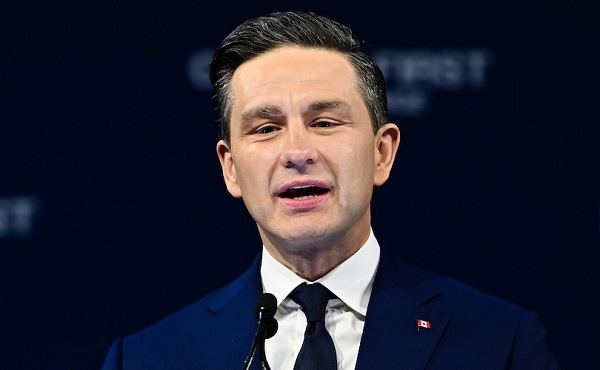conflict
World War Syria: The outcome in Syria is so important Trump may reach out to Assad
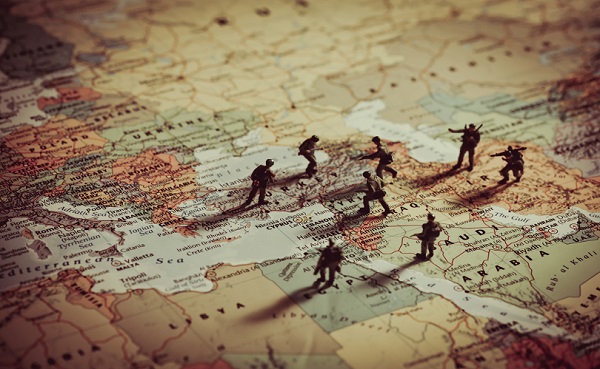
From LifeSiteNews
By Frank Wright
The United States is backing anti-Christian ‘rebel’ groups fighting to depose Syrian leader Bashar al-Assad. As JD Vance once asked, ‘Why can’t we stop genociding Christians?’ The answer is power. And that power has a lot to do with natural gas.
Note from LifeSiteNews co-founder Steve Jalsevac: This article is far more important than it might at first seem. It addresses a very complex situation. If you persevere to the end, you will understand the enormous global significance of what is now occurring in Syria that, among other things, concerns the fate of many ancient Christians in the region.
This was a difficult report to write given the many competing and rapidly changing forces involved. Few will explain this extraordinary situation as well as Frank Wright has done in this article.
The long war in Syria which has recently resumed is not only about the fate of the Christians in that troubled nation, nor about a new migrant wave which would follow its collapse.
It is certainly not about freedom. The incursion of Turkey in the north, and the resurgence of Western-backed takfiri terrorists from Idlib are signs of a Great Game being played whose resolution may redraw the map of world power.
As we shall see, whoever backs Bashar al-Assad will have the keys to the future. If you think that is a surprising conclusion given the news, that is because the news is part of the campaign.
The main “sides” in this war:
Assad: Syrian Arab Armed Forces
Allied: Russian Air Force, Hezbollah, Iran and its Iraqi militia
Versus:
Turkey: Syrian National Army, United States, Israel: “HTS” (Hay’at Tarir al-Sham) – former Al-Qaeda, ISIS, al-Nusra “rebels.”
In brief, the U.S., Turkey, and Israel support Islamic terrorists to topple Assad, as they have armed and used terrorists such as Al-Qaeda and ISIS in the past to advance their political agendas.
Assad has been left exposed by his presumed Russian and Iranian allies, who are now rushing to his aid – since the operation to oust him has failed.
Both the U.S. and the Russians wanted Assad gone, to be replaced by someone they could control. Instead, Assad has outplayed them all – and now whoever wants to win has to back him.
Moves are being made by both sides to do precisely this, right now. Here’s why.
‘Moderate rebels’
Arch neocon William “Bill” Kristol has described the “anti-Assad fighters” as a force for freedom in Syria which the U.S. should back to the hilt – as it has before.
In fact, these “rebels” are the renamed “Al-Nusra Front.” You may also know them by their stage names of “ISIS/Da’Esh” or “Al-Qaeda.” They are now called “HTS.” They are labeled a terrorist group by the U.K., whose media is now presenting them once again as moderate rebels.
In 2016, one U.S.-backed “anti-Assad” group beheaded a child. In Aleppo, they are now tearing down Christmas trees.
These head-chopping groups were armed by the U.S. in 2012 following the U.S./U.K. operation Odyssey Dawn in Libya. After that state was collapsed and its leader Colonel Muammar Gaddafi murdered, the Clinton State Department sent Libyan army weapons to Syria along the “Rat Line” – in order to arm the “rebels.” WikiLeaks released a cable from 2012 detailing this U.S. strategy to topple Assad.
“[Al-Qaeda] is on our side,” said another.
The goal was regime change. That Libya’s regime had changed from stability and success into a place where slaves are sold and Coptic Christians beheaded was of no account. What mattered was the removal of a leader who refused to bow to Israel, the U.S. proxy in the region – and who presented a threat to the Western debt-slavery financial system.
Israel supports Al-Qaeda
Israel has also said it has effectively supported Al-Qaeda. Former IDF chief Gadi Eisenkot admitted in 2019 that Israel had been arming “Syrian rebels.” Foreign Policy reported in 2018 that Israel had been arming and funding “at least 12 rebel groups” in Syria for years.
Here a former Mossad spokesman admits Israel had been treating wounded Al-Qaeda fighters on its border – for “humanitarian” reasons.
Ask yourself why an army of Islamist extremists on Israel’s northern border has never said a word about Gaza, and has never attacked Israel.
Who are the ‘rebels’?
The so-called “moderate rebels” in Syria are backed by the U.S. and Israel. They are called “takfiris” by other Muslims. Takfiris believe that Muslims, unlike themselves, are apostates, and they have a habit of beheading people. Christians, other Muslims, Westerners. There are videos, of course. This documentary, shot in Idlib, shows some of the brutality of the rebels backed by the West.
The mobilization of these “rebels,” said to be fighting for freedom from Assad, is an attempt by the U.S. and Israel to dissolve the one nation on its borders which has not submitted to U.S./Israeli regional rule.
Egypt, Lebanon, and Jordan all have normalized relations with the Zionist state. Syria hasn’t. Its Golan Heights were occupied by Israel in 1967 and were annexed in 1981.
Turkey
Turkey has long seen northern Syria as a “security zone” which threatens its own stability. Kurdish groups in the region present a threat to Erdogan, who may face a civil war in future, and so he has mounted repeated military operations in the region since 2011. The Syrian National Army is fighting in Syria now, which is a Turkish proxy. He also backs “HTS” – the “rebels.”
Erdogan’s refusal to remove his troops has seen Assad refuse to meet him for two years. Overtures were made towards Assad in July 2024, along with a region-wide rehabilitation of his regime. The latest violence can be seen as an attempt to cancel this development. It has failed.
Erdogan wanted the U.S. to intervene on the ground in 2011 and is suspected of staging a gas attack to trigger Obama’s “red line” for intervention – as Seymour Hersh suggested in 2019.
It appears that Obama decided against intervention at the last minute, which Erdogan sees as a betrayal. He has since undertaken his own operations against the Kurds in the north of Syria, having made a brief alliance in 2022 against them with Assad, a tactic which may explain his July attempt to “mend fences.”
The Kurds are backed by the U.S. Turkey, a NATO member, is going it alone – and is permitted to do so given its enormous strategic leverage. Which brings us back to gas.
Assad’s strategy
Assad has retreated his army to fortify the capital, Damascus. Having moved his troops out of the line of contact, he has ceded ground to the point where the Turkish backed SNA and the takfiri “rebels” are now faced with the prospect of fighting each other.
It would not be the first time. The “rebels” have a fractured history of fighting each other in Syria, as Lindsey Snell reported in December 2023. A now infamous Los Angeles Times article from 2016 showed how Pentagon-backed “rebels” were fighting CIA-backed “rebels.”
Assad has withdrawn to consolidate a position he can hold, leaving the field to a fractious enemy known for infighting. His army, weakened by two years of Israeli airstrikes and defunded by Iran, cannot win in the field, but it can defend his capital.
Killing Christians, again
Why did he do this? The takfiri “rebels” immediately began destroying Christmas decorations in Aleppo, the second city of Syria, as they swept in after Assad’s withdrawal. There are an estimated 50,000 Christians in Aleppo.
Aleppo had the largest Christian population in Syria prior to the U.S.-backed war of 2011, with some 200,000 fleeing the city in the last 13 years – mirroring a dramatic fall in the Christian population throughout Syria.
The Syriac Christians – one of the oldest Christian communities in the world – could face extermination under this new regime of “freedom.” Why is the U.S. backing people who butcher Christians?
If this surprises you, consider that the U.S. invasion of Iraq killed over a million historic Christians. The Turks – a U.S./NATO ally, once killed over a million Christians in Armenia, which is the oldest Christian nation on earth.
As JD Vance asked in May, “Why can’t [the U.S.] stop genociding Christians?”
The answer is power. And that power has a lot to do with natural gas.
The gas line to Qatar
Assad holds the key to a new gas pipeline from Qatar to Syria. Why does this matter?
Europe has an enormous energy deficit due to the shutting down of Russia’s Nord Stream gas pipeline to Germany – likely by the U.S. Sanctions on Russia due to the Ukraine war have restricted European access to cheap energy.
Russia’s other pipeline to Europe is seldom mentioned. This is Turkstream, and it connects Russian gas to Turkey through the Black Sea. Hungary, Greece, Bulgaria, and the Balkans rely on this gas supply to function as states – and it is described as a “Trojan horse” for Russian power in Europe.
Keeping this supply open means these nations can remain stable, and it gives Russia enormous leverage in Europe. Turkish cooperation is crucial, which is one reason for Russia agreeing to Turkish demands in the agreements which settled the 2011 war in Syria. If Russia also controls Syria, it has cornered the gas market and secures strategic global influence.
Turkey, Russia, Iran, and Astana
Known as the Astana Format, this 2017 settlement saw Russia, Turkey, and Iran agree to cooperate over security in Syria, after the war which followed the 2011 attempt to “regime change” Assad. In recent days, both the Russian and Iranian foreign ministers have insisted on returning to the format to end the war.
The 2023 Carnegie Endowment report on Astana said, “This insistence on the Astana format reveals its true modus operandi: a mechanism for normalizing the military presence of its sponsors, while minimizing interstate friction.”
Russia said it placed S300 air defense systems in Syria in 2018. Following a request from Israel, and to Turkish delight, Russia withdrew these in late 2022, despite Assad having paid for them. This left Syrian airspace open for the Israeli airstrikes which have continued to hit Assad’s army ever since. Russia’s move also discouraged Israel from sending arms to Ukraine.
For four years, Russia never once permitted these systems to fire on Israeli military aircraft which bombed Iranian militias in Syria. Russia was “playing a double game,” as Yossi Melman reported for Haaretz in May 2020 – permitting the weakening of Iran, whilst maintaining its own presence. This is called “deconfliction” – an attempt to balance its presence without direct conflict with the U.S. and its allies.
Iran had been funding Assad since 2011. One credit line ran out in 2019, and Assad had to demobilize many of his troops in July. Iran removed many of its elite officers from Syria in February. Why did the Russians and the Iranians expose their ally like this?
Russia relies on Turkish cooperation and seeks “appeasement” of Israel. Though Russia wishes to retain its influence in Syria, along with its naval base in Tartus and its air force base in Hmeimim, it would go along with Iran but prefer a more pliant leadership. Assad was meant to go.
Assad has refused to bow to the U.S., to the Turks, to Israel, and has refused to dissolve his remaining army in this latest attempt to destroy his state – as the Russians and Iranians appear to have intended.
With his allies weakening him, how can he be said to hold the trump card?
The Great Game in Syria
Syria is not about freedom or friendship. It is the site of the Great Game for world domination. Whoever takes Assad’s deal wins the game. What is this deal and why does it matter?
Assad is now seeking allies with the Gulf States, and key to this is Qatar. This could see a gas pipeline from Qatar to Syria built in order to supply Europe with the energy it desperately needs. Robert Fisk foresaw the significance of this move in 2018. It was described by Assad as the “Four Seas Program” and was announced in 2009. Another source claims Assad proposed this vision 20 years ago in 2004.
Its realization would reduce Israel to a “minor country” in a new Syria-led regional power structure, according to Dr. Imad Fawzi Shoueibi – head of the Data and Strategic Studies Center in Syria. Initially involving Turkey, an alternate route could bypass both Turkey and the former plan to link with China, with both sidelined. Qatar, currently holding the U.S. anti-Assad line against wider Gulf efforts to normalize relations, will do whatever the Americans want. The U.S. wants to win.
In 2000, Qatar proposed to build this pipeline through Syria to Turkey. Assad refused this U.S.-backed initiative, likely because it would hand major influence to the Turks.
In 2006, the U.S. State Department began funding opposition operations in Syria against Assad, as WikiLeaks revealed. The Washington Post reported that a cable from the top U.S. diplomat in Damascus in 2009 said, “[Assad] would undoubtedly view any U.S. funds going to illegal political groups as tantamount to supporting regime change.”
His regime was a problem to the U.S. grand strategy to build a pipeline to defeat its rivals. What followed, say some, was the “Arab Spring” color revolution which came to Syria in 2011, and the long war we see reigniting today.
U.S. forces remain stationed at the U.S. Conoco Gas Field in northern Syria, whose pipeline was blown up by Iranian militias in October 2023. Qatar has armed and funded the “rebels” ever since, and continues to do so today. Yet its strategy remains aligned with the U.S. – not with the takfiri rebels. The aim was to oust Assad. It has not worked.
If this pipeline gets built it could cut the Chinese belt and road in half and will destroy Russian influence. This depends on where this pipeline ends, and whether it includes or excludes Iran, Russia, and Turkey.
The “pipeline theory” of the Syrian long war was advanced in 2016 by Robert F. Kennedy Jr. His polemic blames the CIA, “who began its active meddling in Syria in 1949 – barely a year after the agency’s creation [sic].” Another pipeline was in the pipeline – from Iran to Syria – agreed in 2011. This was obviously a threat to the U.S. and the West. “Nothing on this front will happen as long as Assad clings to power” was the view from 2012.
The Qatar-Syria-Turkey “pipelineistan” thesis was dismissed as a “conspiracy theory,” saying the notion was only floated in 2009 – when Assad said on August 1 of that year:
“Once the economic space between Syria, Turkey, Iraq and Iran becomes integrated, we would link the Mediterranean, Caspian, Black Sea, and the [Persian] Gulf. … We aren’t just important in the Middle East. … Once we link these four seas, we become the unavoidable intersection of the whole world in investment, transport, and more.”
Yet the same report shows the pipeline strategy had been Assad’s vision since at least 2004.
With the game having changed, it is now about who allies with Assad, since removing him has failed.
Energy shocks in the West
Since then, major shocks to the West have accompanied the war in Ukraine, which have once again changed the game. As has the blocking of the Suez – a major route for liquefied natural gas shipments to Europe. This is the argument advanced in Le Monde in 2022, for the revival of the argument of the tremendous strategic power in the proposed Syrian gas line. It would make possible the formerly impossible – the replacement of Russian gas supplies to Europe by Qatar.
Changing the Russian game
The postwar settlement after Ukraine is most likely to result in a renewal of Russian gas supplies to Europe. Germany and its satellites will die without cheap reliable energy. The German government has already dissolved over the economic crisis created by its support for the Ukraine war, and the French government looks likely to do the same.
This gives Russia enormous geostrategic power. Putin’s thesis was written on the subject of “Mineral and Raw Materials Resources and the Development Strategy for the Russian Economy.”
This is the Russian play in the Great Game.
If Assad builds this gas line without Putin, Russian influence in Europe melts away. A new and lucrative alliance will form to bolster the West. The balance of power shifts dramatically.
The loss of the Sahel to Russian-aligned coups meant that a similar pipeline solution running from Nigeria to Algeria became impossible.
The only long-term options for Europe are now Russian gas, or Qatari gas.
Assad the kingmaker
This makes Assad the kingmaker. His move could undermine BRICS, end Russian geostrategic leverage in Europe, and handicap Chinese grand strategy.
This is the reason no one cares whether Christians get butchered en masse. This is the reason the people likely to butcher them are being styled as freedom fighters by people like William Kristol.
Whoever controls Syria can dictate the fate of the world. This is the site of the real world war, the one which will decide who rules the near future. Whoever controls Syria wins the game. With Assad impossible to dislodge – for now – this means whoever backs him sweeps the board.
For this reason, the Russians sacked their general in Syria and replaced him. Russian air and drone support has intensified, striking hard against “rebel” positions.
Iran has also renewed support at this late stage, with Iranian-backed militia arriving – including from Iraq.
Interesting times
In a final series of startling twists, the U.S. and the United Arab Emirates have offered to lift sanctions on Assad if he pivots away from Iran. This would likely normalize relations with Qatar.
The former chief of staff of the Israeli army said in 2013 – and in 2017 – that it is in Israel’s interest if Assad stays in power.
Last weekend, Herb Keinon, an Israeli analyst close to every Israeli prime minister for the last 24 years, wrote in the Jerusalem Post on December 1 warning a post-Assad Syria carries significant risks to Israel – and may trigger military intervention. Later reports show Israeli concerns that the “rebel” attacks’ failure may now empower Iran in Syria.
Assad may pivot to the U.S. He may shake hands with Trump in the New Year. It may seem unthinkable that Assad “switches sides,” but this would guarantee the survival of Syria, and the only regime capable and willing to offer any protection to Christians at all.
If this happens, Russian global power is defeated on the brink of a hard-fought victory. The Chinese global trade network is cut in two. This could revive the U.S. global empire. The nations of the Gulf making overtures to BRICS would realign with the U.S. once more. This would secure the status of the dollar as the world’s reserve currency.
The Great Game would be over for a long time to come.
This is the most remarkable power struggle in recent history. Its significance dwarfs any other conflict on earth, and its resolution will decide not only the fate of nations, the region, but also who dominates the world for the decades to come.
Syria’s long war is the undeclared world war. This is why it matters, because what happens there decides everything else. As is usual at this level, the human cost is never counted, and there are no friends – only interests. Such is the game. It is being played out now, behind a smokescreen of propaganda and lies, because public opinion is manufactured by those who have the power to do so.
All that matters to state-level actors is who wins. Not how. This is the lesson of the moment.
Artificial Intelligence
AI Drone ‘Swarms’ Unleashed On Ukraine Battlefields, Marking New Era Of Warfare


From the Daily Caller News Foundation
Artificial intelligence-powered drones are making their first appearances on the battlefield in the Russia-Ukraine war as warfare creeps closer to full automation.
In bombardments on Russian targets in the past year, Ukrainian drones acting in concert were able to independently determine where to strike without human input.
It’s the first battlefield use of AI “swarm” technology in a real-world environment, a senior Ukrainian official and Swarmer, the company who makes the software, told the Wall Street Journal in a Tuesday report. While drones have increasingly defined modern battlefields, swarms until now had been confined to testing rather than combat.
“You set the target and the drones do the rest,” Swarmer Chief Executive Serhii Kupriienko told the WSJ. “They work together, they adapt.”
So far, the Swarmer technology has been used hundreds of times to target Russia assets, but was first used a year ago to lay mines on the front, the Ukrainian official told the WSJ. The software has been tested with up to 25 drones at once, but is usually utilized with only three.
Kupriienko told the WSJ that he was preparing to test up to 100 drones at once with the linking software.
A common arrangement used on the battlefield includes one reconnaissance drone to scout out the target and two explosive drones delivering the payload on target, the official told the WSJ.
While Western nations such as the U.S., France and the United Kingdom are also pursuing drone swarm technology, they have not deployed swarm technology on the battlefield the way Ukraine has, according to the WSJ. Currently, autonomous weapons are not regulated by any international authority or binding agreement, but ethical concerns around the technology has led many to call for increased regulation of weapons like the Swarmer system.
The Ukrainian Ministry of Foreign Affairs did not immediately respond to the Daily Caller News Foundation’s request for comment.
conflict
Trump Pentagon Reportedly Blocking Ukraine From Firing Western Missiles Deep Into Russia


From the Daily Caller News Foundation
The Department of Defense has spent months blocking the Ukrainian military from using American and British-made missiles to hit targets deep inside Russia, The Wall Street Journal reported Sunday, citing unnamed U.S. officials.
Undersecretary of Defense for Policy Eldridge Colby reportedly designed the procedure to review requests to carry out the long-range strikes with weapons that are either of U.S. origin or that require American intelligence or use components provided by the U.S., according to the WSJ. Secretary of Defense Pete Hegseth reportedly has the final say on whether Ukrainian forces can use the MGM-140 ATACMS (Army Tactical Missile System) to hit targets in Russia.
The reported blocks on missile strikes coincides with a Trump administration effort to broker a peace deal between Russia and Ukraine. A Pentagon spokesperson declined to comment further on the matter.
BREAKING: President Vladimir Putin reacts to B-2 Flyover pic.twitter.com/1mzVn7DxlW
— Jack Poso 🇺🇸 (@JackPosobiec) August 15, 2025
The Biden administration allowed Ukraine to carry out strikes with ATACMS in November, weeks after President Donald Trump won the 2024 election, the New York Times reported. Trump criticized the move during a December interview with Time magazine.
“It’s crazy what’s taking place. It’s crazy,” Trump said. “I disagree very vehemently with sending missiles hundreds of miles into Russia. Why are we doing that? We’re just escalating this war and making it worse. That should not have been allowed to be done.”
Trump and Russian President Vladimir Putin met in Alaska on Aug. 15 for a summit meeting during which Trump sought to secure a cease-fire in Russia’s war with Ukraine. As Trump greeted Putin, a B-2A Spirit stealth bomber and several fighters carried out a flyover of Elmendorf Air Force Base.
Trump met with Ukrainian President Volodymyr Zelensky and major European leaders on Aug. 18 to update them on the summit.
In July, Trump reached an agreement with NATO where members of the alliance would purchase weapons, including MIM-104 Patriot surface-to-air missiles, and donate them to Ukraine.
-

 Opinion2 days ago
Opinion2 days agoJordan Peterson needs prayers as he battles serious health issues, daughter Mikhaila says
-
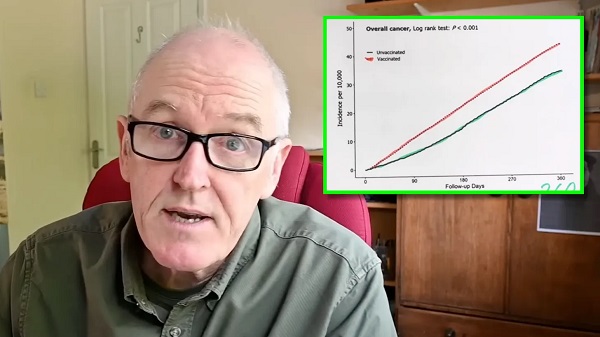
 COVID-192 days ago
COVID-192 days agoDevastating COVID-19 Vaccine Side Effect Confirmed by New Data: Study
-

 Censorship Industrial Complex2 days ago
Censorship Industrial Complex2 days agoWinnipeg Universities Flunk The Free Speech Test
-
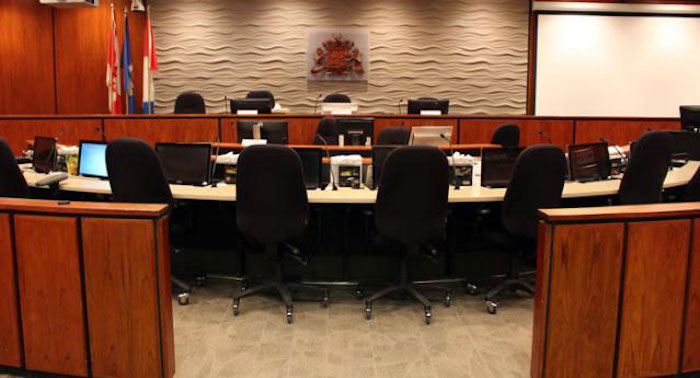
 Red Deer1 day ago
Red Deer1 day agoThe City of Red Deer’s Financial Troubles: Here Are The Candidates I Am Voting For And Why.
-

 Crime2 days ago
Crime2 days agoThe Bureau Exclusive: Chinese–Mexican Syndicate Shipping Methods Exposed — Vancouver as a Global Meth Hub
-

 Crime2 days ago
Crime2 days agoCanadian Sovereignty at Stake: Stunning Testimony at Security Hearing in Ottawa from Sam Cooper
-

 Business1 day ago
Business1 day agoCanada Post is failing Canadians—time to privatize it
-
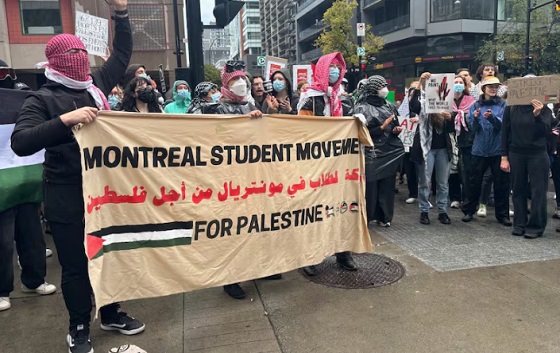
 Haultain Research2 days ago
Haultain Research2 days agoInclusion and Disorder: Unlearned Lessons from Palestinian Protests




